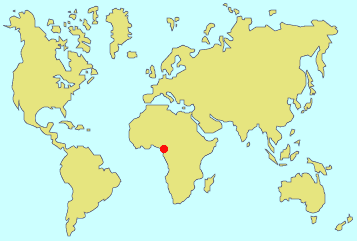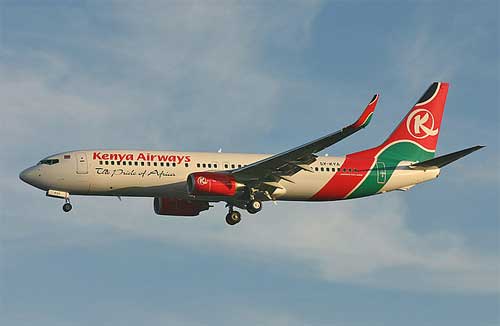Kenya Airways Boeing 737-800 plane crash
Mbanga Pongo, Cameroon

Updated on
 The Kenya Airways Boeing B737-800 bound for Nairobi, Kenya, with 114 people on board crashed shortly after takeoff from Douala, Cameroon, in torrential rain. The flight originated in Ivory Coast but stopped in Cameroon to pick up more passengers.
The Kenya Airways Boeing B737-800 bound for Nairobi, Kenya, with 114 people on board crashed shortly after takeoff from Douala, Cameroon, in torrential rain. The flight originated in Ivory Coast but stopped in Cameroon to pick up more passengers.
The plane had departed an hour late because of rain. It issued a distress call a few minutes after takeoff, but then lost contact with the radio tower.
The wreckage was found southeast of Douala, 6km far from the runway end, along the plane's flight path from the Douala airport - more than 40 hours after the Boeing 737-800 lost contact with the airport.
All the 105 passengers and nine crew were killed. The causes of the accident are under investigation, but it is remotely possible that the plane could have inadvertently gone into some extremely turbulent air and suffered massive hail damage or a sudden structural failure.
The final moments of Kenya Airways Flight 507 were preceded by anxiety over the weather as the plane sat on the tarmac for more than an hour. Three jetliners sat ready for takeoff at Douala International Airport, their crews waiting for a massive thunderstorm to move away.
Just a few minutes past midnight, all three radioed air traffic control to check the weather report. They were told the storm would take another hour to dissipate, and the Cameroon Airlines and Royal Air Maroc crews opted to wait it out. But the Captain Kenya Airways Flight 507, already delayed for an hour and carrying scores of passengers with onward connections to catch, judged the weather had improved sufficiently to permit departure for Nairobi.
Douala tower cleared the flight for takeoff at 1 am, instructing it to report on reaching 5,000 feet (1,500 meters). The plane took off, but 30 seconds after becoming airborne the plane nose-dived into a swamp.
Flight crews are responsible for the decision whether to take off or land in bad weather, usually depending on guidelines prescribed by their airline. The Boeing 737-800 is fitted with weather radar: pilots routinely take off into stormy weather and then rely on radar to guide them around the towering cumulonimbus thunderheads that can cause structural damage to airframes.
While air traffic control can take measures to prevent flights, including closing down airports, such drastic measures are highly unusual outside the northern hemisphere where heavy winter snows can block runways and bring traffic to a standstill.
The wreckage in the thick jungle indicated the plane flew nose-first into the ground at a nearly 90 degree angle. It was found buried deep in a crater of reddish-brown muck with only tiny bits of the rear fuselage and wings left above ground. Trees nearby were smashed, but otherwise the jungle canopy remains intact, making the site almost invisible from the air.
Investigators said the nose-dive indicated that a violent gust of wind within a thundercloud may have flipped the airliner over, throwing it into a fatal dive. The low altitude (3000 ft), would have made it impossible to recover the plane. The impact with ground was extremely violent.



